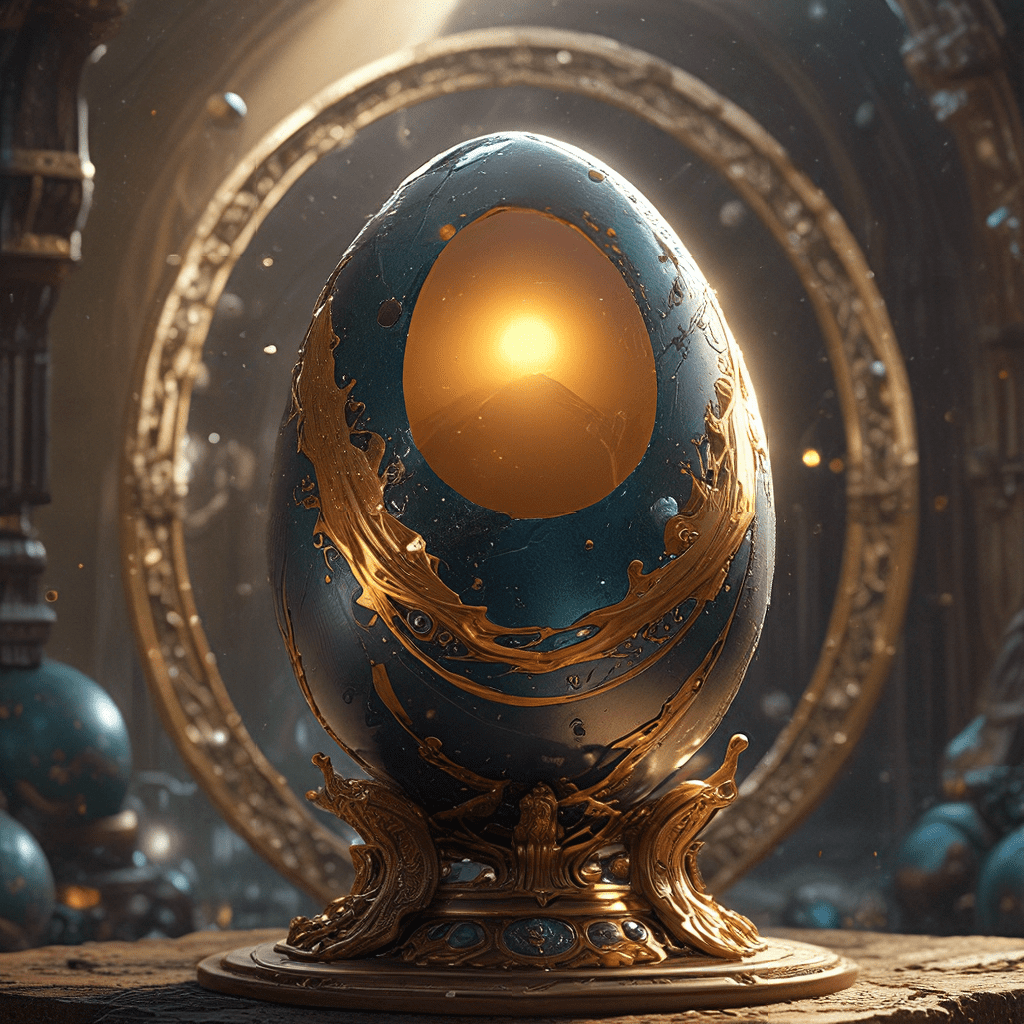## The Cosmic Egg: A Scientific Perspective on Egyptian Mythology
1. Introduction: The Cosmic Egg in Egyptian Mythology
In ancient Egyptian mythology, the concept of the Cosmic Egg, known as “ben ben”, plays a significant role in explaining the origins of the universe and its creation. This egg, often depicted as a mound of earth, represents a primordial state from which all life emerged. The “ben ben” symbolizes the initial point of creation, a singularity from which all things began.
The Cosmic Egg holds a pivotal position in Egyptian creation narratives, offering a fascinating glimpse into their worldview. It speaks to their deep understanding of the fundamental principles underlying the universe’s formation. Exploring this myth through a scientific lens allows us to connect ancient beliefs with modern scientific discoveries, highlighting potential parallels between mythology and cosmology.
2. The Big Bang Theory: A Scientific Parallel
The Big Bang theory, a cornerstone of modern cosmology, offers a scientific explanation for the universe’s origin. According to this model, the universe originated from an extremely hot and dense state, a singularity, about 13.8 billion years ago. The singularity expanded rapidly, leading to the formation of space, time, and matter as we know it.
The parallels between the Big Bang singularity and the Egyptian Cosmic Egg are striking. Both concepts depict a singular point from which everything originated, highlighting the idea of a primordial state preceding the universe’s existence. The “ben ben”, like the singularity, represents a concentrated point of energy and potential, embodying the initial spark of creation.
3. The Expanding Universe and the Primordial Waters
Observations of distant galaxies reveal that the universe is expanding, meaning galaxies are moving further apart. This expansion, stemming from the Big Bang, supports the idea of an initial state of concentrated energy and matter that expanded outward.
In Egyptian mythology, the primordial waters, known as Nun, played a significant role in creation. These waters represented a chaotic and boundless state before the universe’s emergence. The expansion of the universe, mirrored in Nun’s vastness, suggests a connection between ancient myth and scientific observations. Both depict a state of chaos and potential before order emerges.
4. The Formation of the Sun and Stars: Ra and the Sun God
Stars, including our Sun, form through the gravitational collapse of massive clouds of gas and dust. This process, fueled by nuclear fusion, results in the formation of celestial bodies that emit light and heat.
In Egyptian mythology, the god Ra is often depicted emerging from the Cosmic Egg, bringing light and life to the universe. He symbolizes the sun, the source of energy and life for the ancient Egyptians. The connection between Ra’s emergence from the Cosmic Egg and the scientific process of star formation is intriguing. Both concepts point to the creation of light and energy from a primordial state.
5. The Role of Order and Structure: Atum and the Creation Process
The universe, despite its chaotic origins, evolved into a complex and structured system. Galaxies, star systems, and planets formed over billions of years, establishing a cosmic order. This transition from chaos to order is evident in the formation of the solar system and the intricate balance of forces within the universe.
In Egyptian mythology, the god Atum, emerging from the primordial waters, represents the emergence of order and structure. He symbolized the initial force that brought order to chaos, creating the universe and its elements. This narrative echoes the scientific concept of the universe transitioning from a state of random energy to a structured and orderly system.
6. The Elements and the Creation of Life: The Ennead and The Chemical Processes
The formation of life on Earth involved the complex interplay of elements and chemical processes. From basic molecules to complex organisms, life emerged through a gradual evolution driven by chemical reactions and environmental factors.
The Egyptian Ennead, a group of nine deities representing various aspects of the universe, reflects the importance of elements and their role in creation. These deities, often depicted as representing the fundamental forces of nature, symbolize the interconnectedness of the elements and their essential role in bringing forth life. Their representation echoes the scientific understanding of the critical role of elements in the formation and evolution of life.




